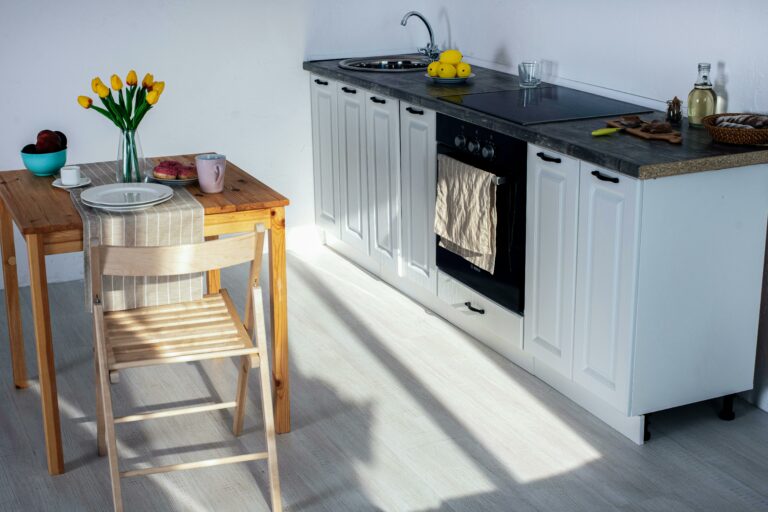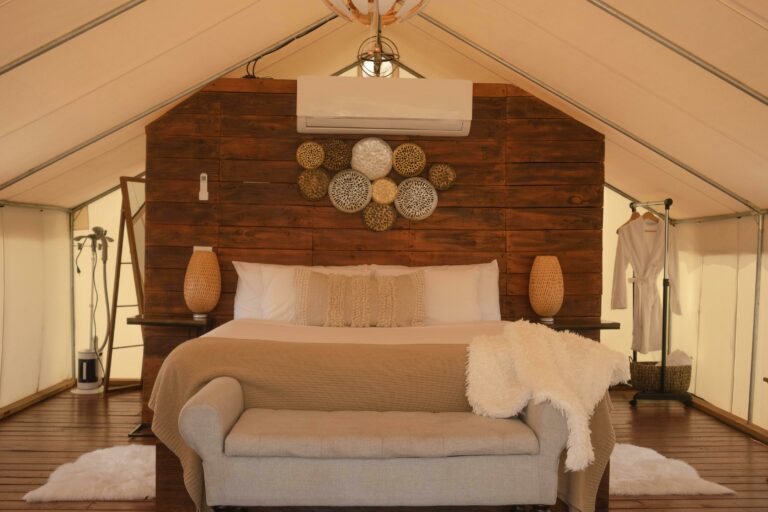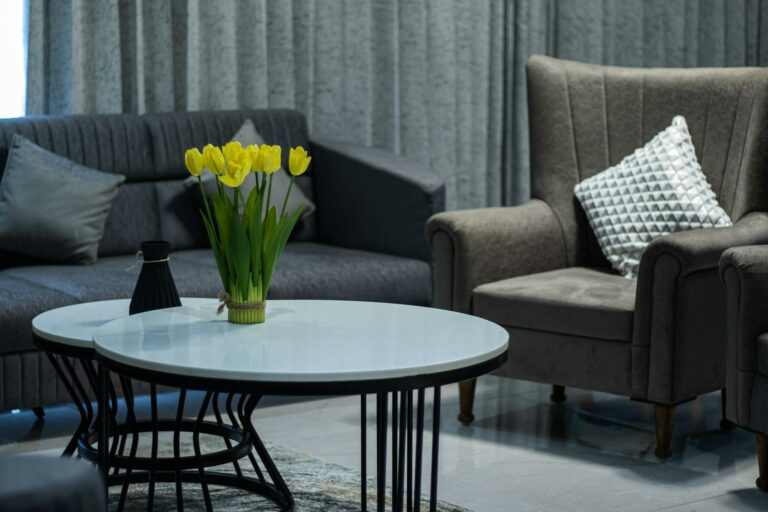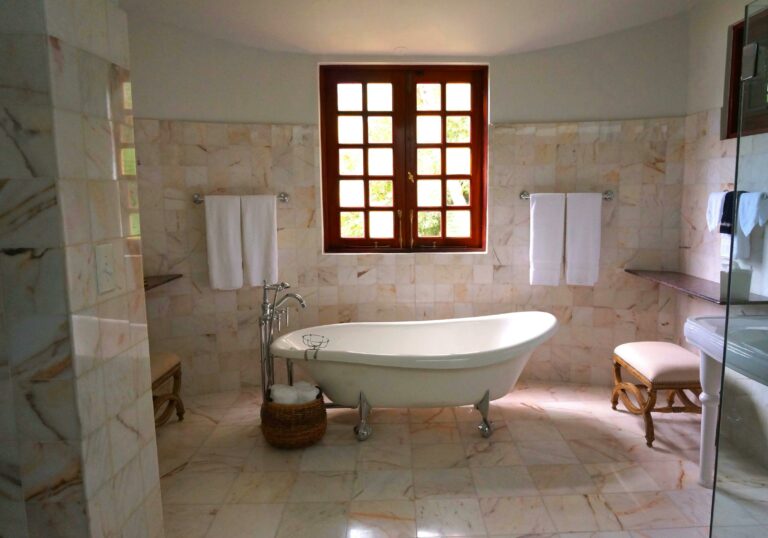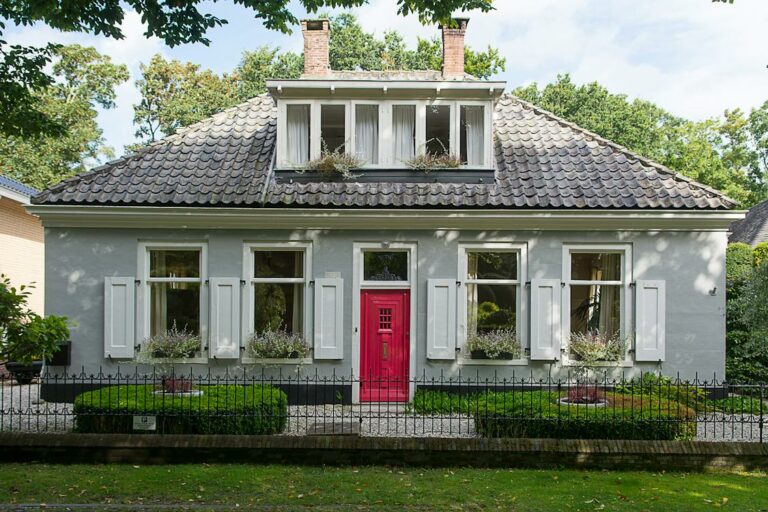Unlocking Your Home’s Potential: Tips for Designing the Perfect Space in 2023
Welcome to this article on unlocking your home’s potential and designing the perfect space! Your home is a reflection of your personality and style, and creating a space that meets your needs and brings you joy is key to a happy and fulfilling living environment. Whether you’re moving into a new home or looking to give your current space a makeover, this guide will provide you with valuable tips to transform your house into a home that truly feels like you.
Table of Contents
- 1 Unlocking Your Home’s Potential in 2023
- 2 Assessing Your Needs and Goals
- 3 Creating a Functional Layout
- 4 Choosing the Right Color Palette
- 5 Enhancing Lighting and Ambiance
- 6 Selecting Suitable Materials and Finishes
- 7 Incorporating Personal Style and Décor
- 8 Emphasizing Functionality in Every Room
- 9 Considering Smart Home Technology
- 10 Working with Professionals
- 11 Conclusion
- 12 Frequently Asked Questions
Unlocking Your Home’s Potential in 2023

Designing a home involves more than just choosing furniture and colors. It requires thoughtful planning, careful consideration of your lifestyle and goals, and attention to detail. From creating functional layouts to selecting the right materials and finishes, every decision you make contributes to the overall ambiance and functionality of your space. In this article, we will explore various aspects of home design and provide practical advice to help you make informed choices.
Designing your home should be an exciting and enjoyable process, and with the right tips and guidance, you can create a space that not only looks beautiful but also enhances your everyday life. So, let’s dive in and start unlocking the potential of your home!
Assessing Your Needs and Goals

To design the perfect space for your home, it’s essential to begin by assessing your needs and goals. This step sets the foundation for the entire design process and ensures that the final result aligns with your lifestyle and preferences. Let’s dive into some key aspects of assessing your needs and goals:
Identifying Your Lifestyle
Understanding your lifestyle is crucial in determining the functionality and layout of your space. Consider how you use each room and your daily routines. Are you an avid cook who spends a lot of time in the kitchen? Do you work from home and need a designated workspace? Are you a social butterfly who loves entertaining guests? Identifying these aspects will help you tailor the design to your specific lifestyle needs.
Determining Your Space Requirements
Next, evaluate the space available in your home and determine your requirements for each room. Measure the dimensions of each room and take note of any architectural features or limitations. Consider the number of people who will be using each space and any specific activities that will take place. For example, a larger dining area might be necessary if you frequently entertain or have a big family.
Setting Design Goals
Once you have a clear understanding of your lifestyle and space requirements, it’s time to set design goals. Think about the overall feel and ambiance you want to achieve in your home. Do you prefer a cozy and intimate atmosphere or a more open and airy feel? Consider the aesthetic style you’re drawn to, whether it’s modern, rustic, minimalist, or eclectic. Setting design goals will guide your decisions throughout the design process and ensure cohesive and purposeful results.
By taking the time to assess your needs and goals, you lay a strong foundation for the design of your perfect space. Understand your lifestyle, determine your space requirements, and set clear design goals to create a home that reflects your personality and caters to your specific needs. Remember, the design process is a journey, and this initial step will set you on the right path to unlocking your home’s full potential.
Creating a Functional Layout
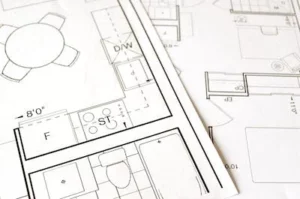
When it comes to designing the perfect space in your home, one of the key aspects to consider is creating a functional layout. Your home should not only look visually appealing but should also meet your needs and make your life easier. Here are some tips to help you create a functional layout that maximizes the use of your space:
Understanding Room Flow
- Consider the traffic flow: Think about how people will move through the room and make sure to arrange furniture and objects accordingly. Avoid placing furniture in a way that obstructs the natural flow of movement.
- Create distinct zones: If you have an open floor plan, create different zones within the space for different activities. Utilize furniture placement and area rugs to define these zones.
- Leave enough space: Make sure there is enough space between furniture pieces to allow for easy movement. This is particularly important in areas where people are likely to walk or gather.
Maximizing Storage Space
- Use built-in storage: Built-in storage solutions can help you make the most of your space. Consider incorporating shelves, cabinets, or closets into the design to keep your belongings organized and out of sight.
- Think vertically: Utilize vertical wall space by installing shelving units or cabinets that go all the way up to the ceiling. This will help you maximize storage without taking up valuable floor space.
- Get creative with storage solutions: Look for multifunctional furniture pieces that offer hidden storage compartments. Ottomans, coffee tables, and bed frames with built-in drawers are great examples.
Choosing the Right Furniture
- Consider the size of your space: Before purchasing furniture, measure your space to ensure that it will fit comfortably without overcrowding the room. Oversized furniture can make a room feel cramped and cluttered.
- Prioritize comfort and functionality: Choose furniture that not only looks good but also serves its purpose well. Opt for comfortable seating and functional pieces that meet your specific needs.
- Arrange furniture for conversation: Arrange seating in a way that promotes conversation and interaction. Position sofas and chairs facing each other to create an inviting and social atmosphere.
“A functional layout is all about creating a space that flows well, maximizes storage, and contains the right furniture pieces. Take the time to plan and consider your needs to design a room that is not only visually appealing but also practical for everyday use.”
Choosing the Right Color Palette

When it comes to designing the perfect space in your home, choosing the right color palette is essential. The colors you select can greatly impact the overall look and feel of a room, influencing everything from the mood to the perceived size of the space. So, how do you go about selecting the perfect color palette for your home? Let’s dive in and take a closer look:
Understanding the Psychology of Colors
Before you start picking out paint swatches, it’s important to understand the psychology of colors. Different colors can evoke different emotions and moods, so it’s crucial to choose colors that align with the purpose of each room. Here are a few examples:
- Blue: Blue is known for its calming and serene qualities, making it an excellent choice for bedrooms or spaces where relaxation is key.
- Yellow: Yellow is associated with energy and happiness, making it a great option for areas where you want to create a vibrant and cheerful atmosphere, such as kitchens or home offices.
- Green: Green has a calming effect and is often associated with nature and renewal. It can work well in any space, particularly those where you want to promote a sense of balance and tranquility.
- Red: Red is a bold and intense color that can evoke passion and excitement. It can work well as an accent color in spaces where you want to make a statement, such as a dining room or living room.
Creating a Cohesive Color Scheme
Once you have an understanding of the emotions and moods associated with different colors, it’s time to create a cohesive color scheme for your home. Here are a few tips to keep in mind:
- Start with a neutral base: Begin by selecting a neutral color, such as white, beige, or gray, as the base for your color scheme. This will serve as a backdrop for the other, more vibrant colors you choose.
- Choose complementary colors: Look for colors that are opposite each other on the color wheel for a complementary color palette. These combinations often create a visually pleasing and harmonious effect.
- Consider the flow of your home: When selecting colors for different rooms, think about how they will flow from one space to another. You want the colors to complement each other and create a cohesive look as you move throughout your home.
- Take into account natural light: Keep in mind that natural light can greatly affect how colors appear in a room. Test out your color choices by painting swatches on the walls and observing how they look at different times of the day.
Using Accent Colors
Once you have your base colors selected, it’s time to think about incorporating accent colors into your design. Accent colors can add depth and interest to a space, and they can be incorporated through various elements, such as furniture, accessories, or artwork. Here are a few ideas:
- Bold accent walls: Consider painting one wall in a room with a bold accent color to create a focal point and add visual interest.
- Textiles and fabrics: Add pops of color through throw pillows, curtains, or rugs.
- Artwork and decorations: Hang colorful artwork or display decorative items that feature your chosen accent colors.
Remember, when it comes to choosing accent colors, less is often more. You want the accents to enhance your design without overwhelming the space.
Choosing the right color palette for your home can make a significant difference in the overall aesthetic and atmosphere of each room. By understanding the psychology of colors, creating a cohesive color scheme, and incorporating accent colors thoughtfully, you’ll be well on your way to designing a space that truly reflects your style and creates the ambiance you desire. So go ahead, grab those paint swatches and start bringing your vision to life!
Enhancing Lighting and Ambiance

When it comes to designing the perfect space in your home, one crucial aspect to consider is lighting. Lighting can greatly impact the ambiance and overall feel of a room. Whether you’re looking to create a cozy and inviting atmosphere or a bright and energizing space, understanding how to enhance lighting in your home is essential. In this section, we’ll explore some tips and tricks for optimizing lighting and creating the right ambiance for each room.
Taking Advantage of Natural Light
Natural light brings warmth and brightness to a space, making it feel open and refreshing. Here are a few ways you can maximize natural light in your home:
- Clear Window Treatments: Opt for lightweight curtains or blinds that allow plenty of light to pass through. Consider using sheer fabrics or light colors to maintain privacy while still allowing natural light to shine in.
- Mirrors: Strategically placing mirrors across from windows can reflect and amplify natural light throughout the room. Mirrors also create a sense of depth and make the space appear larger.
- Trim Back Outdoor Foliage: Overgrown trees or shrubs outside your windows can block light from entering your home. Trimming them back will ensure an unobstructed flow of natural light.
Selecting Appropriate Artificial Lighting
While natural light is paramount, artificial lighting plays a significant role in creating the desired ambiance. Here are some factors to consider when selecting artificial lighting:
- Layered Lighting: Instead of relying on one central light fixture, incorporate multiple light sources to create layers of lighting. This can include overhead lighting, task lighting, and accent lighting. Layered lighting adds depth and flexibility to the ambiance of a room.
- Dimmer Switches: Installing dimmer switches allows you to adjust the intensity of the artificial lighting to match the desired mood. Dimming the lights in the evening can create a cozy and relaxing atmosphere, while brightening them during the day can increase productivity.
- LED Lights: Investing in energy-efficient LED lights not only helps reduce your energy consumption but also provides better lighting quality. LED lights are available in various color temperatures, allowing you to choose warm or cool tones to suit your preference.
Using Lighting to Highlight Key Features
Apart from providing general illumination, lighting can also be used to highlight specific features in a room. Here are a few ways you can use lighting to bring attention to key elements:
- Accent Lighting: Use small, focused lights or recessed spotlights to draw attention to artwork, architectural details, or decorative objects. Accent lighting adds visual interest and creates a focal point in the room.
- Under-Cabinet Lighting: In the kitchen or bathroom, installing under-cabinet lighting can illuminate countertops and provide both functional and aesthetic benefits. Under-cabinet lights can create a warm and inviting ambiance while also improving task lighting for activities such as food preparation or makeup application.
- Wall Sconces: Wall-mounted sconces can add a touch of elegance and style to any room. They can be placed strategically to enhance architectural features or provide soft, ambient lighting. Wall sconces are particularly useful in hallways, entryways, or as bedside lighting.
Incorporating these lighting techniques into your home design can transform the ambiance of each room and create the perfect atmosphere for any occasion. Remember, it’s essential to strike a balance between natural and artificial lighting and to choose fixtures that complement the style and functionality of the space. By carefully considering your lighting options, you can create a home that feels comfortable, inviting, and perfectly tailored to your needs.
Selecting Suitable Materials and Finishes

When it comes to designing the perfect space in your home, selecting the right materials and finishes is crucial. Not only do they contribute to the overall aesthetic of the room, but they also impact the functionality and durability of your space. Here are some tips for choosing suitable materials and finishes that will enhance the look and feel of your home:
Choosing Durable and Easy-to-Maintain Materials
- Durability: Opt for materials that can withstand the daily wear and tear of your household. Consider factors such as resistance to scratches, stains, and moisture.
- Ease of maintenance: Choose materials that are easy to clean and maintain. Look for finishes that are low maintenance and require minimal effort to keep them looking their best.
Exploring Different Textures
- Visual interest: Incorporating different textures adds depth and visual interest to your space. Mix and match textures to create a dynamic and visually appealing environment.
- Tactile experience: Consider how different materials can enhance the tactile experience of your home. From smooth surfaces to textured finishes, textures can evoke different feelings and contribute to the overall ambiance of the room.
Considering Eco-Friendly Options
- Sustainable materials: With a growing emphasis on sustainability, consider using eco-friendly materials in your home. Look for materials that are renewable, recyclable, and have a minimal impact on the environment.
- Non-toxic finishes: Choose finishes that are free from harmful chemicals and VOCs (volatile organic compounds). This will not only benefit the environment but also ensure a healthier living space for you and your family.
Remember, the materials and finishes you choose should not only align with your personal style but also complement the overall design of your home. Don’t be afraid to mix and match different materials to create a unique and visually appealing look. By selecting suitable materials and finishes, you can create a space that is both beautiful and functional.
“Materials should be selected not just for their aesthetic appeal but also for their suitability and performance in your home.”
Incorporating Personal Style and Décor

When it comes to designing the perfect space in your home, incorporating your personal style and décor is essential. This is the part of the design process where you can truly make your space your own and showcase your unique personality. By following these tips, you’ll be able to create a space that not only looks beautiful but also reflects who you are:
Showcasing Artwork and Photographs
- Display your favorite artwork and photographs to add a personal touch to your space.
- Create a gallery wall by hanging multiple pieces together for a stunning visual display.
- Mix and match different frames and sizes for an eclectic look.
Adding Plants and Greenery
- Incorporate plants and greenery into your space to bring life and freshness indoors.
- Choose plants that suit your lifestyle and the lighting conditions of your room.
- Use different types of planters and pots to add visual interest.
Incorporating Meaningful Objects
- Display sentimental objects such as heirlooms or souvenirs that hold special meaning to you.
- Use decorative objects that reflect your hobbies or interests. For example, if you love music, display musical instruments or sheet music.
- Mix in vintage or antique pieces to add character and charm to your space.
Incorporating your personal style and décor into your home is all about creating a space that feels truly you. It’s important to remember that your space should be a reflection of your personality, and it should make you feel happy and comfortable. Don’t be afraid to experiment and have fun with your design choices. Your home should be a place that brings you joy and allows you to express yourself through your personal style.
Emphasizing Functionality in Every Room
When it comes to designing the perfect living space, functionality should be at the forefront of your mind. After all, a well-designed home is one that not only looks great but also meets the needs of those living in it. In this section, we will explore some tips for emphasizing functionality in every room of your home.
Kitchen: Optimizing Storage and Workflow

The kitchen is often considered the heart of the home, so it’s important to ensure that it is both functional and efficient. Here are a few key considerations for optimizing storage and workflow in your kitchen:
- Cabinetry: Invest in good quality cabinets that can hold all your kitchen essentials. Consider features like pull-out shelves and organizers to maximize space utilization.
- Countertops: Choose durable and easy-to-clean countertops that provide ample workspace for food preparation.
- Layout: Arrange your appliances and work areas in a way that promotes a smooth workflow. The classic “work triangle” concept, with the sink, stove, and refrigerator forming a triangle, is a tried-and-true design principle.
- Storage Solutions: Incorporate space-saving solutions like pot racks, magnetic knife strips, and vertical storage to keep your kitchen organized and clutter-free.
Living Room: Creating a Cozy and Inviting Space

The living room is where you relax, entertain guests, and spend quality time with your loved ones. Here’s how you can make it a functional and cozy space:
- Furniture Placement: Arrange your furniture in a way that encourages conversation and creates a comfortable seating area. Consider the size and layout of the room when choosing the right furniture pieces.
- Multifunctional Pieces: Opt for furniture that serves multiple purposes, such as ottomans with hidden storage or coffee tables with built-in shelves. This way, you can maximize functionality and minimize clutter.
- Lighting: Incorporate various lighting options, including ambient, task, and accent lighting, to create the desired mood and functionality in your living room.
- Organization: Invest in storage solutions like built-in shelves, entertainment centers, and baskets to keep electronics, books, and other items neatly organized.
Bedroom: Promoting Relaxation and Restful Sleep

Your bedroom should be a tranquil sanctuary that promotes relaxation and restful sleep. Consider the following tips to enhance functionality in your bedroom:
- Bed Placement: Position your bed in a way that allows for easy access on both sides and maintains a good flow in the room. Avoid placing it directly under windows or in front of doors.
- Storage Solutions: Utilize under-bed storage containers, storage benches, and closet organizers to keep clutter at bay and maximize your storage space.
- Lighting: Incorporate a mix of ambient, task, and accent lighting to create a cozy and inviting atmosphere. Install dimmer switches so you can adjust the lighting according to your needs.
- Bedside Essentials: Ensure you have convenient storage near the bed for items like books, reading glasses, and a glass of water. Consider bedside tables or wall-mounted shelves.
By focusing on functionality in every room of your home, you can create a space that not only looks beautiful but also meets your everyday needs. Whether it’s optimizing storage and workflow in the kitchen, creating a cozy living room, or designing a relaxing bedroom, these tips will help you unlock the full potential of your home. Remember, a functional home is a happy home!
Considering Smart Home Technology

In today’s modern world, technology has infiltrated almost every aspect of our lives, including our homes. Smart home technology has revolutionized the way we live, making our lives more convenient, efficient, and secure. If you’re designing your perfect space, considering smart home technology is definitely a smart move. So, let’s dive into the world of smart home technology and explore how it can enhance your home design.
Exploring Home Automation Options
Home automation is at the core of smart home technology. It allows you to connect and control various devices and systems in your home through a centralized hub or smartphone app. With home automation, you can automate routine tasks, control your home’s systems and appliances remotely, and create personalized settings for different scenarios.
Some popular home automation options include:
- Smart Lighting: Control your lights with a tap on your smartphone or set them to turn on and off automatically based on your schedule or occupancy. Dim the lights to create a cozy ambiance or brighten them up for better productivity.
- Smart Thermostats: Save energy and money by remotely controlling your home’s temperature. Smart thermostats learn your preferences and adjust the temperature accordingly, ensuring optimal comfort and efficiency.
- Smart Security Systems: Keep your home secure with smart security systems that include features like video doorbells, motion sensors, and remote monitoring. Receive real-time alerts and have peace of mind knowing your home is protected.
Integrating Smart Devices
In addition to home automation, there are a plethora of smart devices that can be seamlessly integrated into your home design. These devices offer a range of functionalities and can enhance different areas of your home. Here are some examples:
- Smart Speakers: Enjoy music in every corner of your home by installing smart speakers. These speakers can be controlled using voice commands and connect to various streaming services, allowing you to enjoy your favorite tunes effortlessly.
- Smart Appliances: From smart refrigerators that help you keep track of groceries to smart ovens that can be controlled remotely, integrating smart appliances into your kitchen design can make cooking and meal preparation a breeze.
- Smart Entertainment Systems: Designing a home theater? Consider incorporating a smart TV, soundbar, and streaming devices for an immersive and convenient entertainment experience. Control everything with a single remote or your smartphone.
Enhancing Security and Energy Efficiency
One of the major benefits of smart home technology is the enhanced security it provides. With smart security systems, you can remotely monitor your home, receive alerts, and even communicate with visitors, all from your smartphone. Additionally, smart technology can help improve energy efficiency in your home by:
- Smart Thermostats: These devices learn your temperature preferences and create energy-efficient schedules, helping you save on heating and cooling costs.
- Smart Lighting: Set timers and motion sensors to ensure lights are only on when needed. Control your lighting remotely to prevent energy wastage.
- Smart Energy Monitors: Keep track of your energy usage in real-time, identify power-hungry devices, and find ways to reduce your carbon footprint.
By integrating smart home technology into your design, you can create a home that is not only stylish but also efficient and secure. It adds a modern touch and sets you up for a more connected and convenient lifestyle.
But, before diving into the world of smart home technology, it’s important to consider a few factors:
- Compatibility: Ensure that the smart devices you choose are compatible with the home automation system you plan to use.
- Scalability: Consider the scalability of your smart home setup. Ensure that it can accommodate additional devices or expansions in the future.
- Budget: Smart home technology can vary in price. Set a budget and prioritize the features that are most important to you.
- Privacy and Security: With any technology that connects to the internet, privacy and security are essential. Take steps to protect your data and ensure that your smart home devices have robust security measures.
With these considerations in mind, you can confidently explore the world of smart home technology and design a home that is not only aesthetically pleasing but also technologically advanced. Embrace the future and unlock the full potential of your home.
Working with Professionals

When it comes to designing the perfect space for your home, sometimes it’s best to bring in the expertise of professionals. Working with interior designers, architects, contractors, and tradespeople can ensure that your vision becomes a reality. Here are some tips for working with professionals to unlock your home’s full potential:
Choosing the Right Interior Designer or Architect
- Ask for recommendations from friends, family, or neighbors who have recently worked with designers or architects. They can provide valuable insights and suggestions based on their own experiences.
- Research online and read reviews to get a sense of the designer or architect’s style and approach. Look for portfolios or examples of their previous work to see if it aligns with your aesthetic preferences.
- Schedule consultations with a few different designers or architects to discuss your project. This allows you to gauge their communication style, understanding of your needs, and overall compatibility.
- Clearly communicate your budget and timeline during the consultation. This will help you narrow down your options and find a professional who can work within your constraints.
- Don’t be afraid to ask questions during the consultation. This is your chance to get a better understanding of their process, experience, and any concerns you may have.
Collaborating with Contractors and Tradespeople
- Once you have a design plan in place, it’s time to find contractors and tradespeople to execute the project. Again, ask for recommendations from your designer or architect, or do your own research online.
- Interview multiple contractors and tradespeople to compare prices, timelines, and skills. Look for professionals who specialize in the specific areas of your project, such as plumbing, electrical work, or carpentry.
- Request references from the contractors or tradespeople you are considering. Reach out to their past clients to inquire about their experience working with them.
- Clearly communicate your expectations and requirements to the contractors and tradespeople. Provide them with detailed project plans and ensure they have a clear understanding of the scope of work.
- Regularly check in with the contractors and tradespeople throughout the project to ensure everything is on track. Address any concerns or issues promptly to avoid delays or misunderstandings.
Staying Involved in the Design Process
- While professionals bring valuable expertise to the table, it’s important to stay involved in the design process. This ensures that the final result reflects your personal style and preferences.
- Regularly communicate with your designer or architect about your likes, dislikes, and any changes you may want to make. Share any inspirational images or ideas you come across to help guide the design.
- Attend site visits and meetings with contractors and tradespeople. This allows you to actively participate in decision-making and address any design or construction issues that may arise.
- Be open to suggestions and feedback from the professionals you are working with. They may have valuable insights and alternative solutions that you haven’t considered.
- Trust your instincts and speak up if something doesn’t feel right. Remember, this is your home and you should feel comfortable and happy with the end result.
By working with professionals who understand your vision and can execute it flawlessly, you can create a home that perfectly suits your needs and showcases your personal style. Collaboration, effective communication, and staying involved in the process are key to unlocking your home’s full potential. So, don’t hesitate to reach out to the experts and embark on your design journey today!
Also read; Exterior Design Trends: Enhancing Your Home’s Curb Appeal in 2023
Conclusion
Congratulations! You have now learned the essential tips for designing the perfect space in your home. By following these guidelines, you can unlock your home’s potential and create a space that reflects your personality, meets your needs, and promotes functionality and comfort. Remember, designing a home is a personal and creative process, so feel free to experiment, explore different options, and make choices that align with your style and preferences.
Here’s a recap of the key takeaways:
- Assess your needs and goals: Take the time to identify your lifestyle, space requirements, and design goals before diving into the design process.
- Create a functional layout: Consider the flow of the rooms, maximize storage space, and choose furniture that fits the scale and purpose of each area.
- Choose the right color palette: Understand the psychology of colors, create a cohesive scheme, and use accent colors to add visual interest.
- Enhance lighting and ambiance: Maximize natural light, choose appropriate artificial lighting, and use lighting strategically to highlight key features.
- Select suitable materials and finishes: Prioritize durability and easy maintenance, explore different textures, and consider eco-friendly options.
- Incorporate personal style and décor: Showcase artwork and photographs, add plants and greenery, and include meaningful objects that spark joy.
- Emphasize functionality in every room: Optimize storage and workflow in the kitchen, create a cozy and inviting living room, and promote relaxation in the bedroom.
- Consider smart home technology: Explore home automation options, integrate smart devices, and enhance security and energy efficiency.
- Work with professionals: Choose the right interior designer or architect, collaborate with contractors and tradespeople, and stay involved in the design process.
Remember, designing a home is an ongoing process. As your needs and preferences change, don’t hesitate to update and adapt your space accordingly. The most important thing is to create a home that reflects who you are and makes you feel comfortable and happy.
So go ahead, unlock the full potential of your home and enjoy the process of designing the perfect space for you and your loved ones to thrive in. Happy designing!
Frequently Asked Questions
- What are some important factors to consider when designing a space?When designing a space, important factors to consider are functionality, aesthetics, layout, lighting, and overall ambiance.
- How can I make the most out of a small space?To maximize a small space, utilize multi-functional furniture, opt for light colors, mirror placement, declutter regularly, and utilize vertical space in your home.
- What are some popular interior design styles to consider?Some popular interior design styles to consider are modern, minimalist, farmhouse, industrial, and Scandinavian.
- How can I create a cohesive design throughout my home?To create a cohesive design, establish a consistent color palette, consider the flow between rooms, use similar materials and textures, and repeat design elements throughout the space.
- What should I prioritize when designing a space?When designing a space, prioritize functionality and comfort over trends. Consider your lifestyle, needs, and personal preferences to create a space that reflects your personality and enhances your overall well-being.


